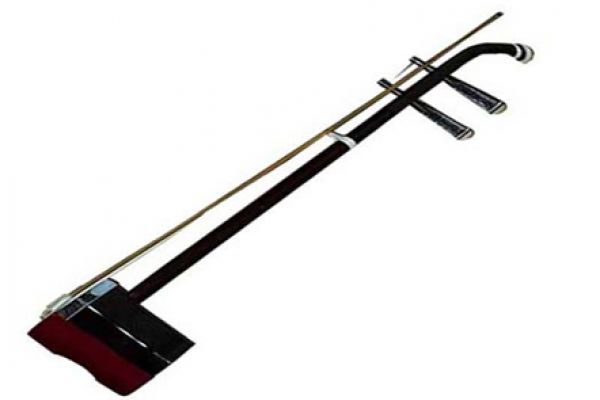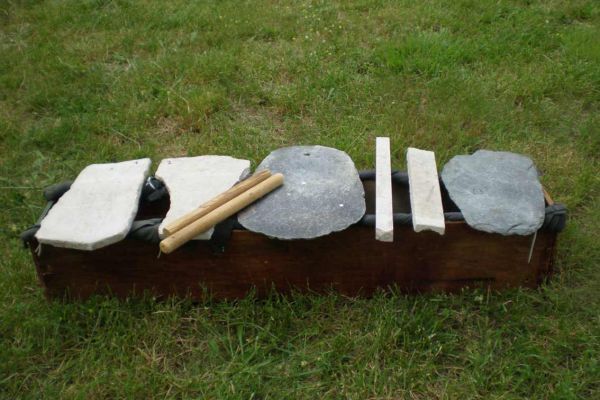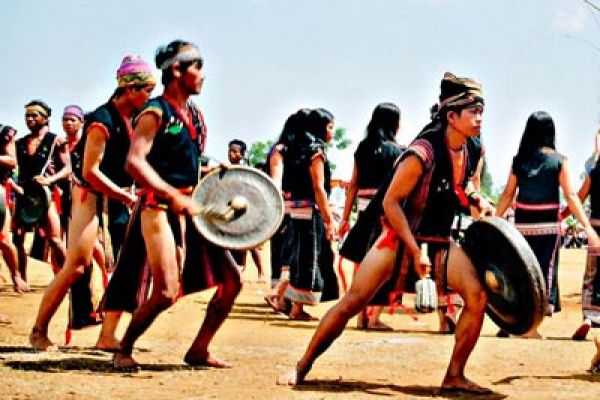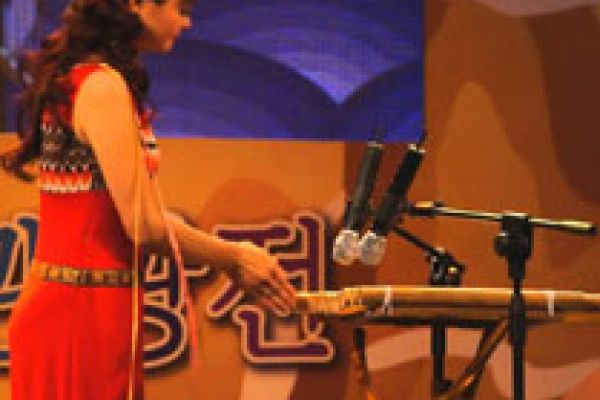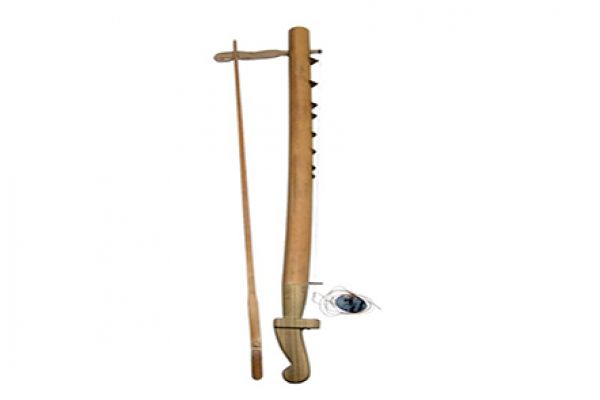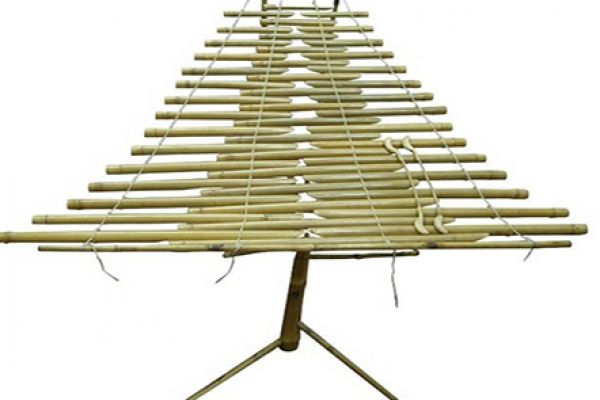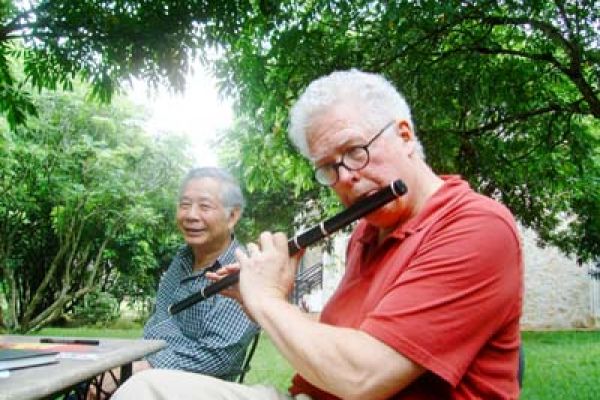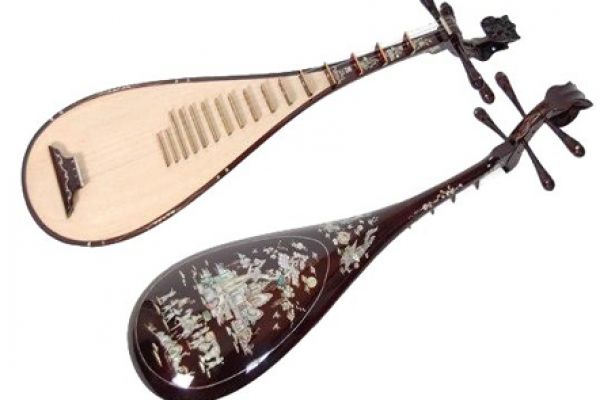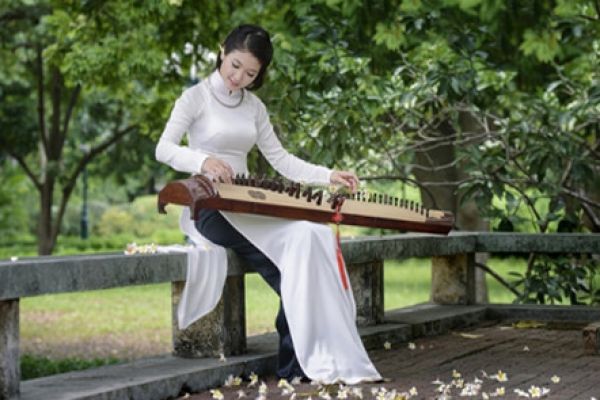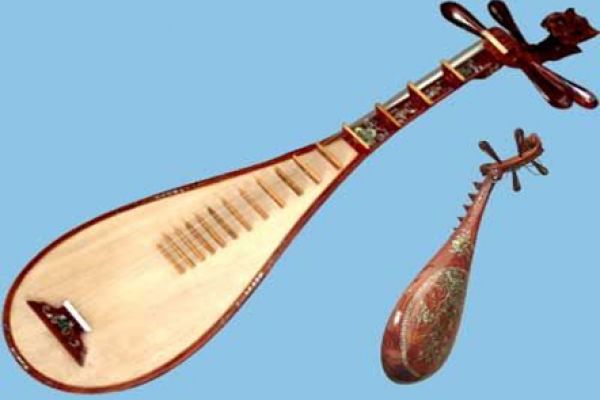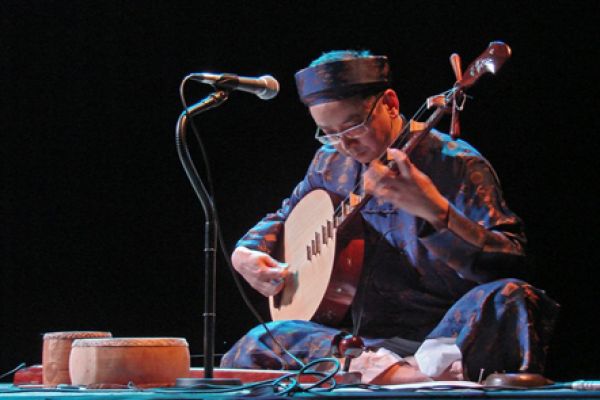Originally, ca tru was also called hat a dao or hat noi (literally song of the women singers). Attractive young singers entertained men in a relaxed environment, sometimes serving drinks and snacks. Men might have visited a hat a dao inn with friends to celebrate a successful business deal or the birth of a son.
Ca tru flourished in the 15th century in northern Vietnam when it was popular with the royal palace and a favorite hobby of aristocrats and scholars. Later it was performed in communal houses, inns and private homes. These performances were mostly for men. When men entered a ca tru inn they purchased bamboo tally cards. In Chinese, tru means card. Ca means song in Vietnamese, hence the name ca tru: tally card songs. The tallies were given to the singers in appreciation for the performance. After the performance each singer received payment in proportion to the number of cards received.
Ca tru requires at least three performers. The singer is always a woman and plays the phach, an instrument made of wood or bamboo that is beaten with two wooden sticks. A musician accompanies the singer on the dan day, a long-necked lute with three silk strings and 10 frets. There is also a drummer or trong chau.
The drummer shows his approval of the singer or the songs depending on how he hits the drum. If he likes a song he might hit the side of the drum several times. If he is disappointed with the singer, he hits the drum twice. The guitar player must follow the rhythm of the phach. His instrument, the dan day, is only used in ca tru and is now made almost exclusively for sale to tourists who find the shape intriguing.

